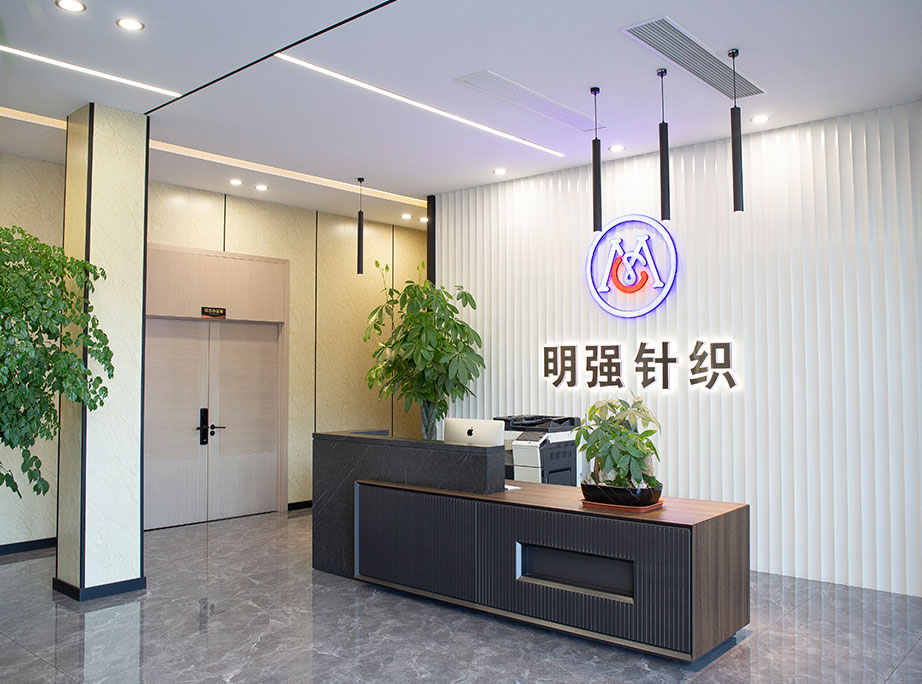1. Apparel: 2*2 ribbed fabric is commonly used in the production of various clothing items. It is frequently found in the cuffs, collars, and waistbands of garments such as t-shirts, sweatshirts, hoodies, sweaters, cardigans, and sportswear. The ribbed texture provides a snug and comfortable fit, making it popular for activewear and casual clothing.
2. Accessories: This fabric can also be used for accessories such as headbands, scarves, gloves, and socks. The stretchability of the ribbed fabric ensures a better fit and added comfort.
3. Undergarments: Due to its elasticity and softness, 2*2 ribbed fabric is often utilized in the production of underwear, undershirts, and base layers. The ribbed texture allows for flexibility and a close fit against the body.
4. Home Textiles: 2*2 ribbed fabric can be used in the creation of various home textiles, including pillow covers, blankets, throws, and upholstery. Its texture and durability make it suitable for adding visual interest and texture to interior decor.
5. Baby Clothing: The softness and stretchability of 2*2 ribbed fabric make it ideal for baby clothing items such as onesies, rompers, and leggings. It allows for ease of movement and a comfortable fit for infants and young children.
It's worth noting that while these are typical applications, the versatility of 2*2 ribbed fabric allows for its use in various other creative ways, depending on the designer's imagination and requirements.
Can 2*2 ribbed fabric be combined with other types of fabrics in a garment?
Yes, 2*2 ribbed fabric can be combined with other types of fabrics to create unique and interesting garments. Mixing fabrics can add visual appeal, enhance functionality, and provide contrasting textures. Here are a few ways 2*2 ribbed fabric can be combined with other fabrics:
1. Contrast Details: 2*2 ribbed fabric can be used as a contrasting element in a garment by incorporating it in specific areas. For example, the cuffs, collar, or waistband of a shirt or jacket can be made from ribbed fabric, while the main body is constructed using a different fabric, such as woven cotton or denim. This creates a visually appealing contrast and adds textural interest to the garment.
2. Paneling: Another way to combine
2*2 ribbed fabric with other fabrics is through paneling. Panels of ribbed fabric can be inserted in specific sections of a garment, such as the sides or sleeves of a dress or top. This technique adds stretchability and allows for a more fitted look, while the main body of the garment can be made from a different fabric, such as a woven or knit material.
3. Accents and Trims: Ribbed fabric can be used as an accent or trim on a garment. It can be added as piping, edging, or as decorative details on collars, pockets, or hems. This can create visual interest and highlight specific areas of the garment.
4. Layering: Layering different fabrics is another way to combine 2*2 ribbed fabric. For example, a sweater or cardigan made from ribbed fabric can be worn over a shirt or blouse made from a different fabric, creating a contrasting look and providing additional warmth and texture.
When combining different fabrics, it's essential to consider factors such as the weight, drape, and stretch of the fabrics to ensure they work well together and maintain the desired aesthetic and functionality of the garment.
Are there any special sewing techniques or considerations when working with 2*2 ribbed fabric?
Working with 2*2 ribbed fabric requires some specific sewing techniques and considerations to ensure the best results. Here are a few tips and considerations when sewing with 2*2 ribbed fabric:
1. Fabric Handling: Ribbed fabric has a stretchy nature, so it's essential to handle it carefully to prevent distortion. When cutting the fabric, use sharp scissors or a rotary cutter to avoid snagging or stretching the fabric. It can be helpful to place the fabric on a flat surface and hold it taut while cutting.
2. Stabilizing: Due to its stretchiness, ribbed fabric can be prone to stretching out of shape during the sewing process. To prevent this, consider stabilizing the fabric edges with a strip of lightweight fusible interfacing or clear elastic tape. This will help maintain the shape and prevent stretching while sewing.
3. Needle and Stitch Selection: When sewing ribbed fabric, it's recommended to use a ballpoint or stretch needle. These needles have a rounded tip that glides between the fabric's knit loops without damaging or breaking them. Additionally, choose a stitch that provides stretch, such as a narrow zigzag stitch or a stretch stitch on your sewing machine. These stitches allow the fabric to stretch without breaking the thread.
4. Seam Finishing: To maintain the stretch and flexibility of the ribbed fabric, consider using stretch-friendly seam finishes. Options include using a serger/overlocker for a clean and stretchy finish, using a narrow zigzag stitch along the seam allowances, or using a stretch stitch on your sewing machine. These finishes accommodate the fabric's stretch and prevent the seams from popping or breaking.
5. Pressing: Ribbed fabric is often delicate and can be sensitive to heat. It's generally best to avoid pressing ribbed fabric with a hot iron directly. Instead, use a pressing cloth or a low-temperature setting on your iron. It's also advisable to press the fabric lightly and avoid excessive pressure, as this can flatten the ribbed texture.
6. Try-on and Fitting: Since ribbed fabric has stretch, it's a good idea to try on the garment throughout the sewing process to ensure the desired fit. This will help identify any adjustments needed before finalizing the seams or hems.
By considering these sewing techniques and precautions, you can work with 2*2 ribbed fabric more effectively, maintaining its stretch and achieving professional results in your sewing projects.










